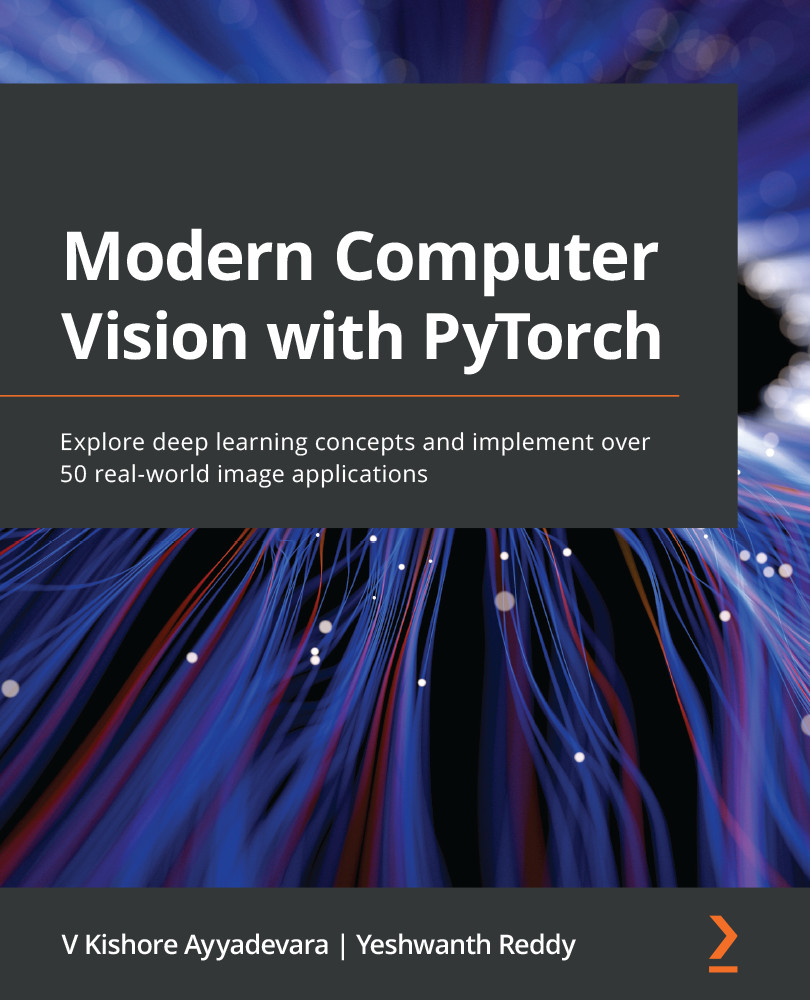One of the major drawbacks of R-CNN is that it takes considerable time to generate predictions, as generating region proposals for each image, resizing the crops of regions, and extracting features corresponding to each crop (region proposal), constitute the bottleneck.
Fast R-CNN gets around this problem by passing the entire image through the pretrained model to extract features and then fetching the region of features that correspond to the region proposals (which are obtained from selectivesearch) of the original image. In the following sections, we will learn about the working details of Fast R-CNN before training it on our custom dataset.
Working details of Fast R-CNN
Let's understand Fast R-CNN through the following diagram:

Let's understand the preceding diagram through the following steps:
- Pass the image through a pretrained model to extract features prior to the flattening layer; let's call the output as feature...


